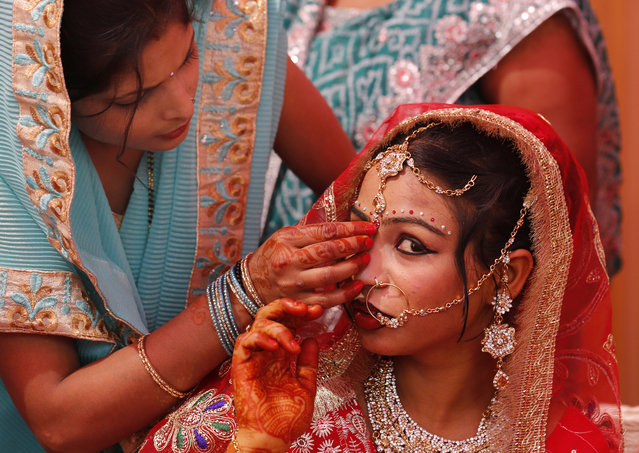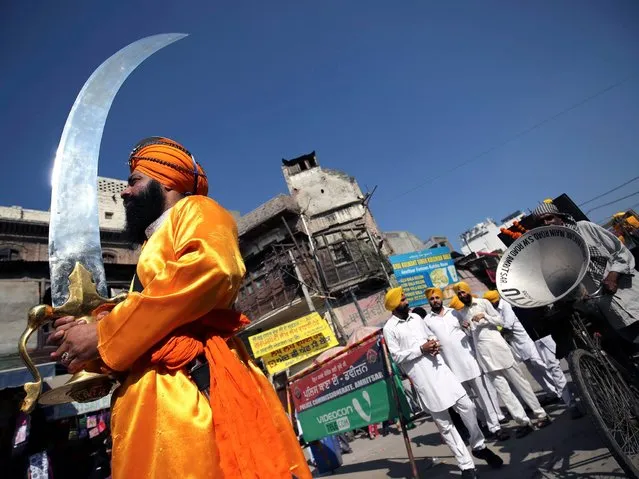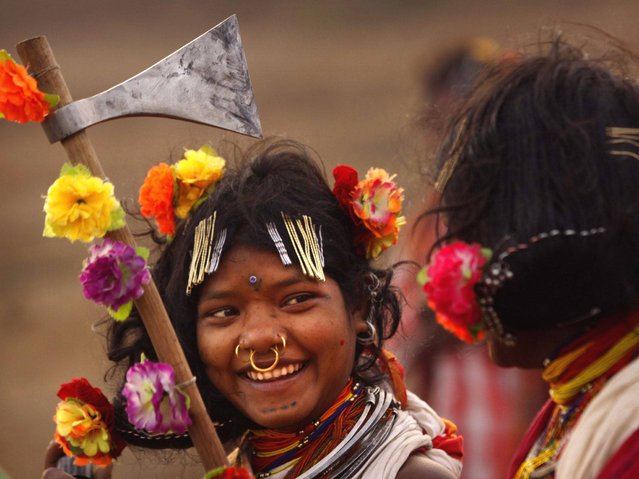
An Indian underprivileged bride gets her jewellery adjusted by a relative during a mass marriage ceremony in New Delhi, India, March 10, 2016. Fourteen underprivileged couples tied up the nuptial knot in the mass marriage ceremony organised by various social organisations. (Photo by Rajat Gupta/EPA)
22 Mar 2016 11:01:00,post received
0 comments







